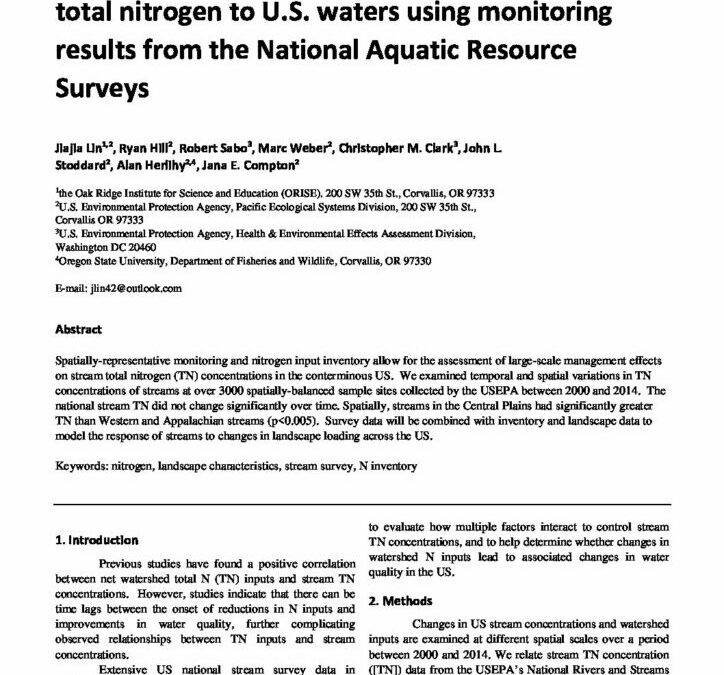Evaluation of changes in landscape loading of total nitrogen to U.S. waters using monitoring results

Spatially-representative monitoring and nitrogen input inventory allow for the assessment of large-scale management effects on stream total nitrogen (TN) concentrations in the conterminous US. We examined temporal and spatial variations in TN concentrations of streams at over 3000 spatially-balanced sample sites collected by the USEPA between 2000 and 2014. The national stream TN did not change significantly over time. Spatially, streams in the Central Plains had significantly greater TN than Western and Appalachian streams (p<0.005). Survey data will be combined with inventory and landscape data to model the response of streams to changes in landscape loading across the US.
Previous studies have found a positive correlation between net watershed total N (TN) inputs and stream TN concentrations. However, studies indicate that there can be time lags between the onset of reductions in N inputs and improvements in water quality, further complicating observed relationships between TN inputs and stream concentrations. Extensive US national stream survey data in conjunction with watershed TN inventory and datasets of landscape characteristics (e.g., soil characteristics, wetland area, agricultural practices, etc.) provide a unique opportunity to address uncertainty about how current management and policy is altering water quality. Our goal is to evaluate how multiple factors interact to control stream TN concentrations, and to help determine whether changes in watershed N inputs lead to associated changes in water quality in the US.
